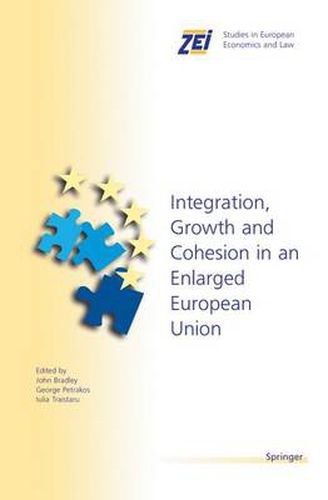Readings Newsletter
Become a Readings Member to make your shopping experience even easier.
Sign in or sign up for free!
You’re not far away from qualifying for FREE standard shipping within Australia
You’ve qualified for FREE standard shipping within Australia
The cart is loading…






This title is printed to order. This book may have been self-published. If so, we cannot guarantee the quality of the content. In the main most books will have gone through the editing process however some may not. We therefore suggest that you be aware of this before ordering this book. If in doubt check either the author or publisher’s details as we are unable to accept any returns unless they are faulty. Please contact us if you have any questions.
This book contributes fresh theoretical and empirical evidence on patterns of regional production structures, specialization, regional disparities, convergence and divergence processes and evaluation of cohesion policies in both current and future European Union (EU) member states in the context of increased integration. These subjects are addressed in both individual and cross-country analyses using innovative methodologies. The book is an essential reading for a large audience including researchers and policy makers working in the fields of economic integration, transition economics and regional development. The thirteen contributions brought together in this book are the result of recent research undertaken in the framework of a larger project initiated and coordinated by the Center for European Integration Studies (ZEI) of the University of Bonn on determinants of regional specialization, growth and convergence in the context of European integration. A number of these papers were presented to a conference on European integration, regional convergence, location of industrial activity and labour market adjustment initiated by the Center for European Integration Studies of the University of Bonn and organized jointly with the Center for European Studies of the University Alexandru Ioan Cuza of Iasi, Romania. We gratefully acknowledge the financial support from the European Commission Framework Programme and the Center for European Integration Studies of the University of Bonn.
$9.00 standard shipping within Australia
FREE standard shipping within Australia for orders over $100.00
Express & International shipping calculated at checkout
This title is printed to order. This book may have been self-published. If so, we cannot guarantee the quality of the content. In the main most books will have gone through the editing process however some may not. We therefore suggest that you be aware of this before ordering this book. If in doubt check either the author or publisher’s details as we are unable to accept any returns unless they are faulty. Please contact us if you have any questions.
This book contributes fresh theoretical and empirical evidence on patterns of regional production structures, specialization, regional disparities, convergence and divergence processes and evaluation of cohesion policies in both current and future European Union (EU) member states in the context of increased integration. These subjects are addressed in both individual and cross-country analyses using innovative methodologies. The book is an essential reading for a large audience including researchers and policy makers working in the fields of economic integration, transition economics and regional development. The thirteen contributions brought together in this book are the result of recent research undertaken in the framework of a larger project initiated and coordinated by the Center for European Integration Studies (ZEI) of the University of Bonn on determinants of regional specialization, growth and convergence in the context of European integration. A number of these papers were presented to a conference on European integration, regional convergence, location of industrial activity and labour market adjustment initiated by the Center for European Integration Studies of the University of Bonn and organized jointly with the Center for European Studies of the University Alexandru Ioan Cuza of Iasi, Romania. We gratefully acknowledge the financial support from the European Commission Framework Programme and the Center for European Integration Studies of the University of Bonn.